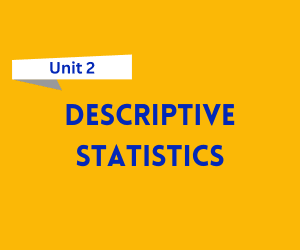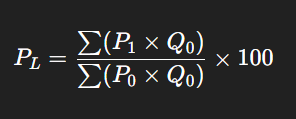Index numbers are powerful statistical tools used to measure changes in variables over time, such as prices, quantities, or values. They serve as economic barometers, helping businesses, governments, and researchers analyze trends and make informed decisions. In business and economics, index numbers are widely used for price comparisons, cost analysis, and economic planning.

Download UNIT 2 – Index Numbers and Their Applications Notes
Get simplified revision notes for this unit:
Download Unit 2 Notes PDF
Meaning of Index Numbers
An index number is a statistical measure that shows changes in a variable or group of related variables compared to a base period. The base period is usually assigned a value of 100, and subsequent changes are measured relative to it.
For example, if the price index is 120, it means prices have increased by 20% compared to the base period.
Types of Index Numbers
Index numbers can be classified into several types depending on their purpose:
Price Index – Measures changes in the price level of goods and services (e.g., Consumer Price Index).
Quantity Index – Measures changes in the quantity of goods produced, consumed, or sold.
Value Index – Reflects changes in both price and quantity over time.
Cost of Living Index – Indicates changes in the cost of maintaining a certain standard of living.
Methods of Construction
Several formulas and methods are used to construct index numbers. The most common are:
1. Laspeyres’ Index
Uses base year quantities as weights.
Formula:

2. Paasche’s Index
Uses current year quantities as weights.
Formula:

3. Fisher’s Ideal Index
Considered the most accurate as it is the geometric mean of Laspeyres’ and Paasche’s indices.
Formula:
Cost of Living Index
The Cost of Living Index (COLI) measures changes in the cost of purchasing a fixed basket of goods and services that represents the average household’s consumption.
A rise in the COLI means higher expenses for households, often leading to demands for wage adjustments.
Governments and businesses use COLI to adjust salaries, pensions, and allowances.
Limitations of Index Numbers
While useful, index numbers have certain limitations:
Choice of Base Year – The results depend heavily on the selection of the base year.
Selection of Items – Inappropriate selection can lead to misleading results.
Changes in Quality – Quality changes in goods and services are often not captured.
Subjectivity in Weights – The choice of weights can introduce bias.
Applications in Business and Economics
Index numbers play a vital role in decision-making:
Tracking inflation and deflation trends.
Adjusting wages, pensions, and allowances based on cost-of-living changes.
Comparing production and sales levels over time.
Assisting in economic policy formulation.

